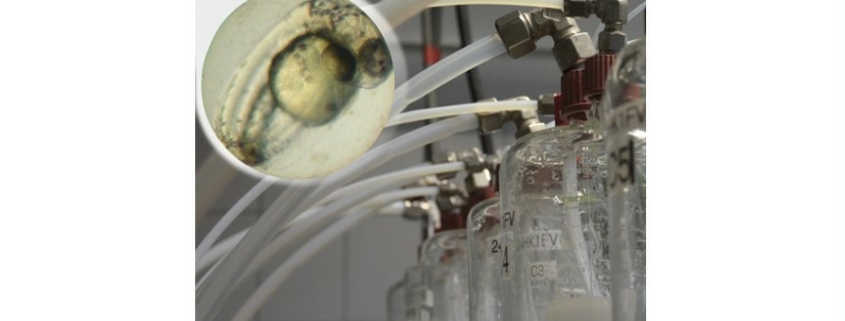Fish early life stage test
Fish early-life stage tests are required for environmental risk assessments of industrial chemicals, plant protection products, biocides, and human and veterinary pharmaceuticals to evaluate chronic effects on the sensitive early life stages of fish. We perform these tests according to OECD test guideline 210 (Fish, early-life stage toxicity test, revised in 2013) in compliance with Good Laboratory Practice (GLP). Our standard test species are zebrafish (Danio rerio) and fathead minnow (Pimephales promelas), both bred inhouse, as well as rainbow trout (Oncorhynchus mykiss).
Fish are exposed to a series of concentrations of the test substance, and to control water. A solvent control is included, if required. For difficult test substances, OECD guidance document 23 is considered. The fish early life stage test is initiated with freshly fertilised eggs and continued until the early juvenile stage. Generally, exposure is carried out under flow-through conditions. The concentrations of the test substance are monitored by inhouse analytical chemistry. The main test endpoints are survival, hatching success, time of hatching, and growth (length, weight). Effect concentrations (EC10, NOEC, LOEC) are determined using appropriate statistical methods.

 K. Duis, M. Weil
K. Duis, M. Weil
 R. Ketelhut
R. Ketelhut